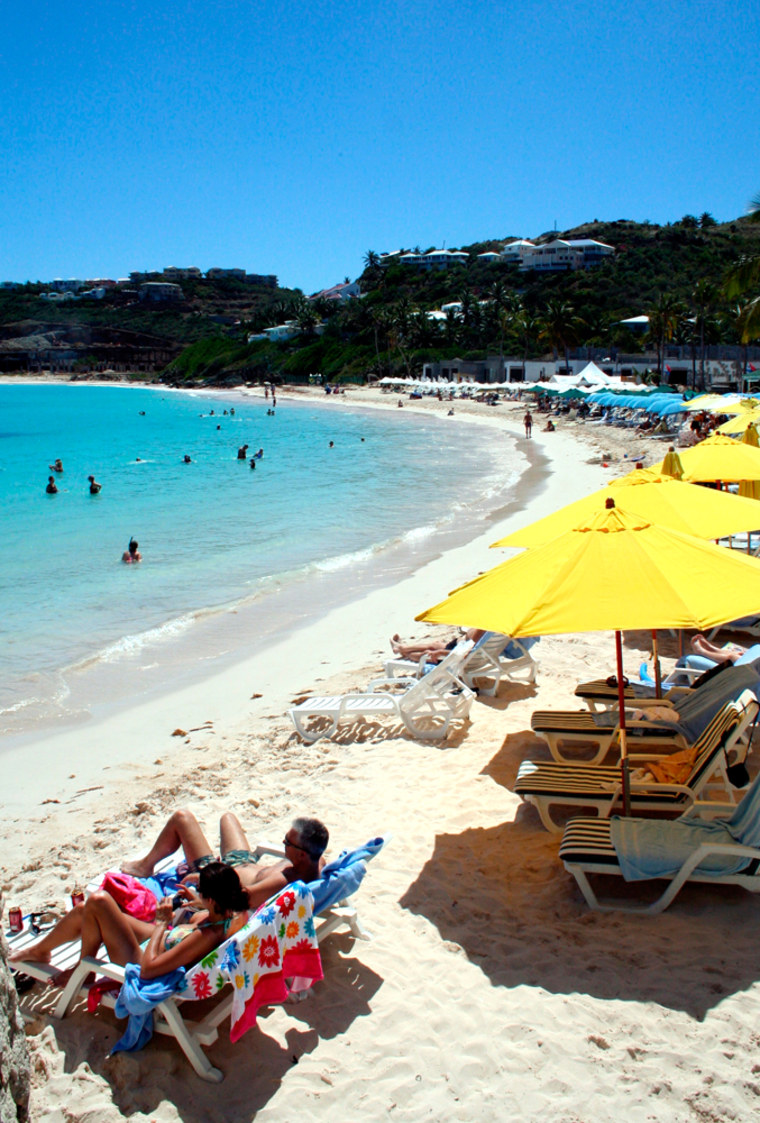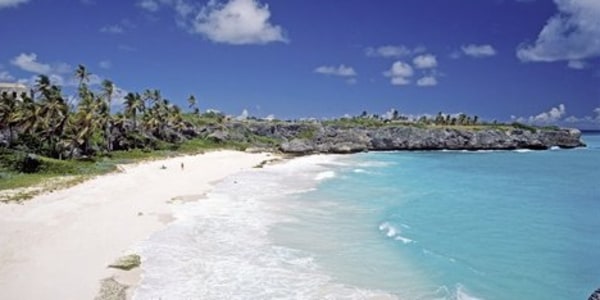It was early on our first morning here as we stepped on to the hotel room terrace to see clear blue, cloudless sky.
The only sounds were ripples of the waters from the Simpson Bay lagoon below and the chirping of the birds. Blackbirds in the palm trees. Tiny goldfinches flitting among the bougainvillea and hibiscus shrubs.
It was only a four-hour-or-so flight from New York area airports, but it was already about 60 degrees warmer than when we left the day before.
When the weather outside is frightful, the Caribbean is oh, sooooo delightful.
There are some 7,000 islands in the Caribbean, arcing south-southeast from below Florida to near the coast of Venezuela. Many are islets and uninhabited reefs, but that still leaves quite a choice.
We have visited some — St. Thomas, Nassau in the Bahamas, Curacao among them and had no complaints with any. All have the allure of bright sun, white sands and signature blue-green waters. But we have settled most assuredly on St. Martin/St. Maarten, coming back some six or seven times.
It is an unusual, if not unique place, as its twin names would indicate. A small, 37-square-mile island, it is half French-owned, part of the French West Indies, and half Dutch territory, listed among the Netherlands Antilles. But there is no real border; it is much like driving through the Holland Tunnel, where you have to be alert to the sign marking the change between New York and New Jersey.
The legend is that the boundaries were set by a race between a Dutchman and a Frenchman, who would walk in opposite directions around the island, and where they met would determine the border. The Frenchman, the story goes, took with him a flask of wine; the Dutchman carried old Dutch gin. The Frenchman covered more ground and claimed 21 square miles; the Dutchman apparently stopped for several gin breaks and ended up with just 16 square miles.
No truth to it. But a good story.
The economy of the island, discovered by Columbus in 1493, used to be based on salt production, which created many salt ponds. But all that is gone today and tourism is the main source of income.
The Dutch side is the busier. It has the welcoming airport, Princess Juliana International Airport, recently re-done and opened with a spanking new terminal in November 2006. It is here, too, in the Dutch-side capital of Philipsburg, where the cruise ships dock at a newly constructed harbor and the shops are generally crowded with tourists.
Construction has boomed in the last five or 10 years, with new hotels, condominiums and casinos.
The French side is quieter and it is there that we have found winter respite. Speaking French, or the native Creole dialect, is not necessary here. Euros or dollars. French or English. All are accepted with no loss of friendliness on "The Friendly Island."
Most of the visitors are French, enjoying their country's generous vacation time, much of it in December. But many are Canadians or Americans, escaping, too, from the northern cold.
Dennis Garo, of Brooklyn, N.Y., has come back twice with his girlfriend. They say they like the atmosphere, calm and relaxed.
Michel and Claire Gonthier, French-Canadians from Orleans, outside Ottawa, stayed on the Dutch side last year, but tried the French half this time.
Neil and Cordelia Goldstein, my brother and sister-in-law from Silver Spring, Md., came back again, too, our companions for a second time.
Slideshow 20 photos
Caribbean way of life
They joined us on that first day, after breakfast on the terrace, at one of the two pools at our hotel, Le Flamboyant, in an area known as Nettle Bay, or Baie Nettle, on the northwestern part of the island.
I watched as some took part in the hotel's organized aqua exercises and read about the typical water sports available in virtually all of the Caribbean resorts: snorkeling, water-skiing, pedal-boating and such. But I tend to follow the basic Caribbean mantra: beach-food-beach. Or pool-food-pool. Or any combination thereof.
We rented a car and, dragged from my pool chaise, drove through the French-side capital of Marigot toward the Atlantic Ocean in the east to Grand Case village for lunch.
And herein lies the attraction that we feel sets St. Martin apart: the food. French cooking in a tropical setting. La vie en rose.
At Le Tastevin, we ate "en bord de la mer," at the edge of the sea.
An Acapulco salad for some lobster with mixed greens, sliced avocado and grilled shrimp. Chicken breast over mixed greens with slices of bleu cheese. Or swordfish or mahi-mahi.
All, of course, with wine. (At other times, beer is more likely, or as the tourist T-shirt quips: Time flies when you're having rum.)
After lunch, to walk it all off, we hiked up Pic Paradis, the highest point on the island at 1,392 feet.
That, and an easier walk up to the top of Fort Louis for a view of the Marigot harbor, was the extent of my activity for the five days, but for a game of pingpong at the beach.
Of course, there's much more to do for those who desire "doing." Water activities, typical of the islands, include water skiing (traditional or mechanized), pedal-boating, snorkeling, sailing, fishing.
There's the shopping, of course, de rigueur in all these islands.
And there are more than 30 different beaches to try out.
On our agenda was a 20-minute ferry to Anguilla for a day trip. (Don't forget your passport.) Similar trips are available to St. Barthelemy or Saba.
But we never made it.
Maybe next year.

